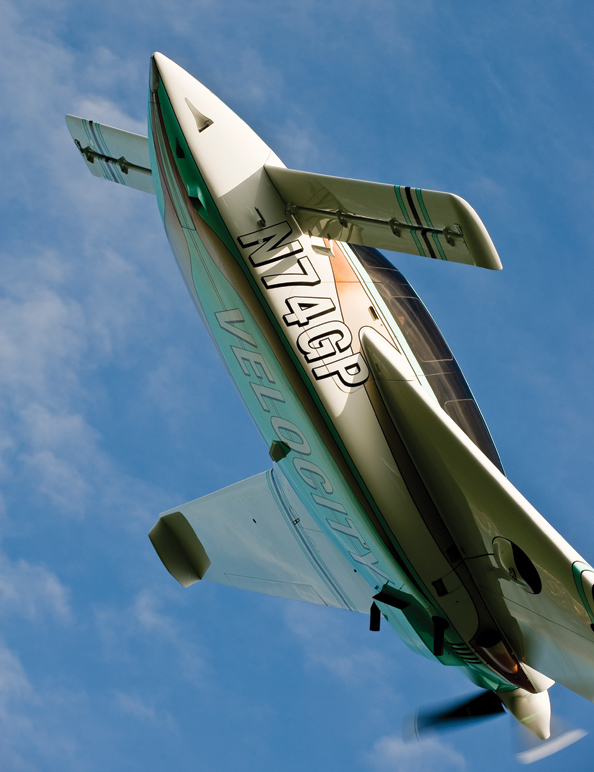
All aircraft are defined by their mission. People hauling. Utility. Speed. Maneuverability and aerobatic prowess. Sex appeal. No sense denying it: We choose aircraft kits and make the commitment to build them based on an ever-shifting set of needs and desires—often not the same thing.
What if the mission objective is to fly a four-place airplane in the flight levels with turbine speed and piston efficiency on a high-performance, single-engine acquisition budget? Most experienced pilots and aircraft owners would say, “Yeah, right.” Or perhaps, “You’re dreaming.” Just as there’s no free lunch, aircraft that are capable of continent-crossing speeds at the altitudes where certain kinds of weather cease to be an issue are unlikely to be available without a generous bank balance.
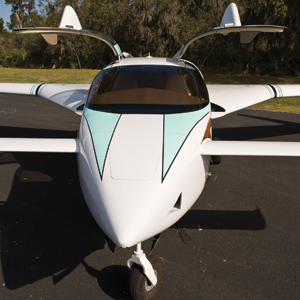
Efficiency as a Key Component
Burt Rutan recognized the lost work of the main wing lifting the downforce of the tail and designed a family of canard airplanes that included the Long-EZ. Rutan’s quest for efficiency most likely came from looking at the Wright brothers, who were severely horsepower limited. In time, the Long-EZ morphed into a wide-body design with side-by-side, three- to four-place seating called the Velocity, thank you very much, Danny Maher. Maher started selling kits in 1985, and today nearly 700 kits have been sold and 500 aircraft are flying. Through it all, these canard designs managed to make speed and efficiency their calling cards, offsetting their basic unsuitability for really rough, short airstrips.
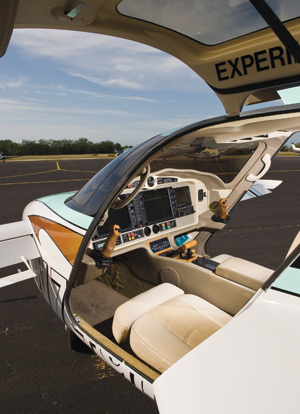
Duane Swing built a Velocity in 1989 and designed several modifications including retractable landing gear. Finally, Swing bought the company in 1992. For a company to flourish and grow it needs a steady stream of new and better products. To fill that need, in 1997 Swing designed a larger version of the kit called the Velocity XL. The original design, the SE, was intended for 160 to 220 horsepower. The XL was intended for naturally aspirated six-cylinder engines up to the 310 hp Continental IO-550.
Engine Matters
When Ronald Stevens was looking for a replacement for his Cirrus SR-22, he came to Velocity. He wanted a comfortable, capable, cross-country airplane that would be much faster than his Cirrus. There had been one previous TSIO-550-powered Velocity, but Stevens wanted to use an engine from Performance Engines in La Verne, California, and add air-conditioning to the mix, and he was willing to fund the development costs to do it.
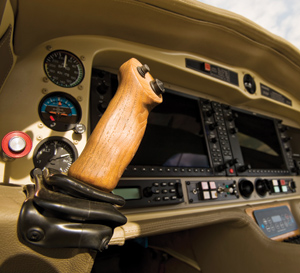
The engine is a ported and polished version of the TSIO-550-E with forged high-compression pistons and other tweaks that help safely raise maximum rpm to 2800. Performance Engines claims the modifications in total yield 400 horsepower—that’s a 50-hp bump over the most stout version of the TSIO-550 as available from Continental. Well, this should be interesting.
Horsepower joins with aerodynamic efficiency for superlative performance in the Velocity. Composite construction allows the airplane to have a sleek skin for low parasite drag while retaining a comfortable cabin that would be nearly impossible to design or build using aluminum. The combination of the gull-wing doors and the newly designed optional sidestick provide easy access to the front seats; rear seat access is tougher. (Neither your grandmother, nor your girlfriend in a dress will want to climb in back.) But anyone who is agile will have no problem and find the rear seats comfortable with acceptable legroom, even for a 6-foot-3, 220-pound aviation writer. The low-cabin appearance of the airplane, due to its shallow side windows and high beltline, is largely an optical illusion; the place for people inside is notably large.
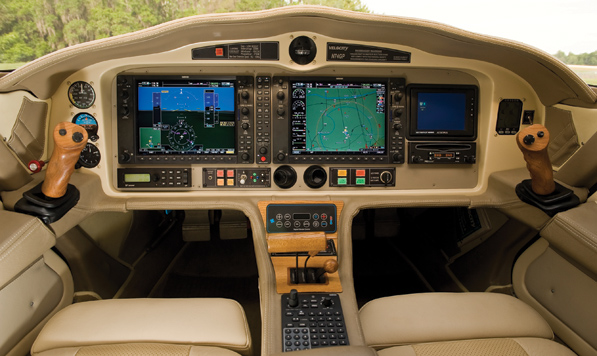
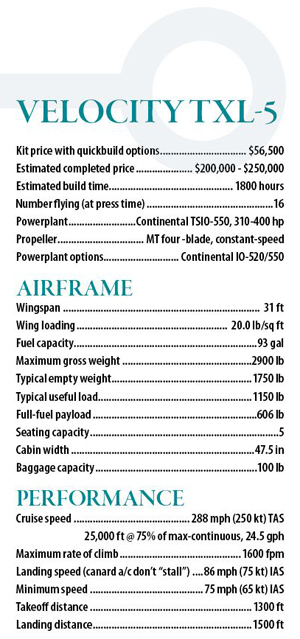
Panel Full o’ Pixels
A spacious instrument panel is uncluttered by two Garmin G900X screens and the three standby instruments. The last Velocity we tested had a then-leading-edge Grand Rapids suite, but the two big-screen Garmins give the Velocity a true “big airplane” appearance from the pilot’s seat. An overhead panel has engine starting and lighting controls. It would be a problem for those visually impaired by “short arms syndrome,” but for a myopic, advancing in years pilot accustomed to peering over the top of the spectacles, it worked perfectly. Luxurious glove leather covers seats generously padded with closed-cell polyurethane foam. It sat as comfortably as it looked.
The fit and finish of the airplane on the outside is smooth and sleek. Many canard airplanes have a spartan exterior appearance, but Stevens has incorporated contemporary graphics appropriate to the modern lines of the airplane. Not only did it look good inside and out, it looked fast.
Fast is a good thing when flying airplanes, but not a good thing when moving them on the ground. Photo flights almost always occur in the early morning or late evening when the light is low. When I saw where the airplane was parked in the display area on the grounds, I was convinced that we would never get it to a taxiway to fly in the morning light. But the patient Velocity crew worked carefully and efficiently to snake the airplane out, and in what seemed like only a few minutes, we were on a taxiway ready for start.
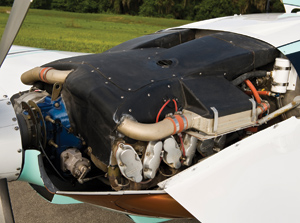
Continental Breakfast
Starting the Velocity is textbook Continental. After a little fuel boost, bump the starter and the big six in the back of the airplane comes to life. With the doors open there is no prop blast, and the exhaust noise is directed behind you. The gull-wing door, pulled down, shut with the feeling of a car door, and moving the latch forward to lock it gave the feeling of a pressurized airplane. With the door closed the cabin was eerily quiet. Demo pilot John Abraham reached down to turn on the climate-control system and selected 68. Within moments a cool breeze was flowing from the overhead vents.
The airplane taxis like any other castering nosewheel airplane. It is annoying to drag a brake, but differential braking works fine. The rudders are small and ineffective at taxi speed. The airplane did not show much tendency to weathervane, but the winds were light. At the end of the runway the runup was standard with one exception: There is no trim indicator. The trim system is a spring cartridge, and the elevator tab on the canard is in plain view of the pilot. Abraham told me to trim the elevator trailing edge down, one finger width for solo, two with passengers, and add a finger for full fuel.
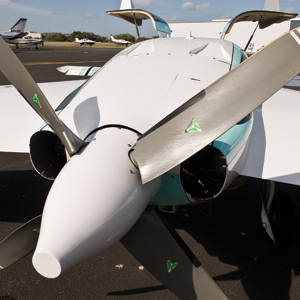
The TSIO-550 has a wastegate controller that manages manifold pressure and allows for full throttle on takeoff. It spooled up smoothly without over-boosting. The initial acceleration was brisk. The small rudders require a significant deflection to maintain directional control, and my first takeoff wandered a bit off center. At about 70 knots indicated (KIAS), the nose got light and a small tug on the outboard stick got us in the air. (I have not flown the previous center-stick arrangement, but the new sidestick setup allows for a single set of central engine controls and the possibility of an instructor in the right seat catching your mistakes without having to literally fight over the stick.)
The aileron control forces felt heavy on the ground, and they were also heavy in the air. Again, a spring cartridge provides aileron trim, and there is no indicator other than stick position. As the airplane left the ground, it was slightly out of roll trim and responded accordingly. The heavy roll forces require a firm push on the stick, but while firm, it must be finessed to prevent over-correction. It’s a curious quirk that the ailerons require considerable force but are very effective in the initial few degrees of control movement. Once the trim was centered, the roll was not an issue.
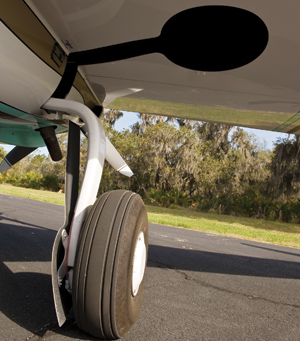
Gear Up, Let’s Go
An electric hydraulic pump in the nose compartment raised the gear, and the speed and climb rate continued to accelerate. We flew the short distance from Lakeland, Florida, to Plant City to meet up with the photo platform and photographer Richard VanderMeulen.
This was my first flight in a canard airplane. I was interested to learn how they handled and flew. My instincts told me that the airplane might be pitchy and light, but the powerful trim system and fairly heavy control pressures make the airplane stay where you put it in pitch and roll. The airplane was yaw stable, and the rudders did little until about half deflection, then responded as normally. The sidestick option might reduce the control movement and hence the leverage contributing to the control forces. Rolling left was especially heavy due to the geometry of how your arm interfaces with the stick.
Many of the canard airplanes of the Rutan legacy have belly-mounted speed brakes. This one did not. Slowing to the 120-KIAS gear speed required some forethought but was not a particular challenge. The gear extended without noticeable effect on the trim, and Abraham recommended a final approach speed of 85 to 90 KIAS. Speed control was straightforward, but it requires precise movement of the stick.
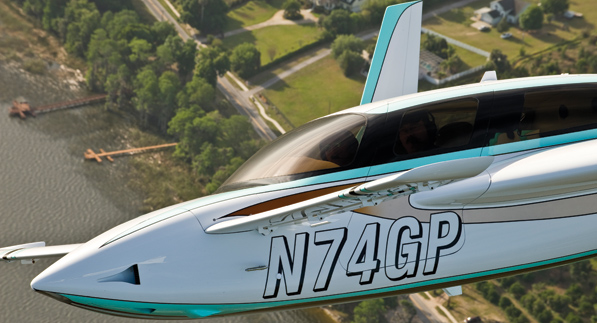
I was told the drill was to fly it on like a wheel-landing in a taildragger. Had it actually been a taildragger, there would have been an incredible bounce, because I failed to sufficiently arrest the descent rate prior to impact and the mains arrived firmly—followed immediately by the impact of the nosewheel. The composite maingear legs and aluminum nosegear strut took it in stride without any tendency to bounce, and we rolled down the runway. The combination residual thrust of the four-blade MT composite propeller and the slippery airframe meant the only way to slow down was with the brakes. They were effective, and we cleared the runway. I did not have canard flying figured out, but I would get another chance.
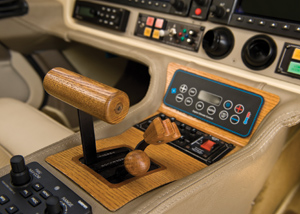
Slot into a Learning Experience
I have opined on these pages before that flying in formation is an excellent way to really learn how to precisely control an airplane. Joined up with an A-36 Bonanza, we orbited for the photos that share the pages with this text. Most Velocity pilots will seldom find themselves in close formation with other airplanes. Probably that’s a good thing: It is not the airplane’s strong suit. It is a challenging airplane to fly precisely in proximity to another airplane. It wasn’t scary, but there was some turbulence and it was hard work.
After the photos I got another shot at a landing, and while it was better, I wasn’t satisfied. We left the photo plane behind, swapped seats, and departed to climb up into the flight levels. Abraham knew the control pressures and positions, and his takeoff lacked the bobble in roll that had plagued me both times.
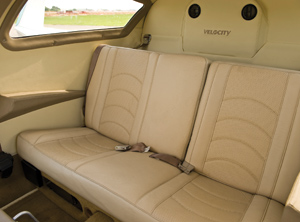
The Velocity XL is a purpose-built airplane. It is intended to be a high-altitude, cross-country cruiser. With the two of us and full tanks, we weighed in at just less than 3000 pounds—well below the airplane’s 3350-pound maximum gross weight, set above the factory’s max of 2900 pounds by the builder. The initial climb was done at 35.5 inches of manifold pressure (MP) and 2700 rpm, burning 40 gallons per hour to yield a climb rate of 1700 fpm at 145 KIAS. That heady rate of climb continued up to 15,000 feet, where we commanded the TruTrak Sorcerer autopilot to maintain 160 KIAS for cooling. This dropped the climb rate to 800 fpm, but passing FL180 the G900 was showing 216 KTAS—in the climb.
At FL210 we leveled off and reduced power to 31 inches/2550 rpm, leaned to 26 gph on the rich side of peak, and waited for the airplane to stabilize. Slippery airplanes seem to just go faster and faster, easing up to the ultimate cruise velocity over a longer period than slower, draggier ships. After a few minutes at FL210, the indicated airspeed settled on 167 knots, which the G900X computed to be 238 knots true (KTAS).
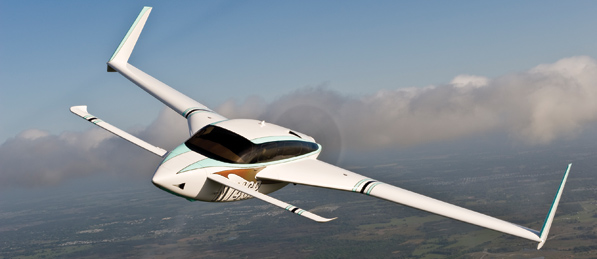
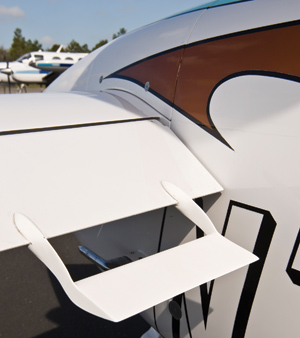
The secret to operating piston engines in the flight levels is cooling. Doing so successfully requires a well-designed cowling system for a stressed turbocharged engine. At 26 gph, the engine was operating well rich of peak and using fuel to keep the CHTs below the yellow arc of 420 F. Abraham said the owner had not explored climbing and cruising on the lean side of peak EGT or TIT (turbine-inlet temperature). The plane was adequately instrumented for lean-of-peak operations, and several TSIO-550 operators successfully use LOP to keep their engines cool. This might be an option to improve efficiency and operate at higher altitudes.
Let there be no mistake: 238 knots in a homebuilt at FL210 is an impressive feat. An old rule of thumb says that for a given IAS, TAS will increase 2% of IAS for every 1000-foot increase in altitude. That means if the same power is available, for every flight level increase, the TAS will increase by 3.3 knots. The engine has plenty of manifold pressure available to produce cruise power at that altitude. Had the time and temperatures permitted, the airplane would have exceeded 250 KTAS at FL250.
For more information, call 772-589-1860 or visit www.velocityaircraft.com.
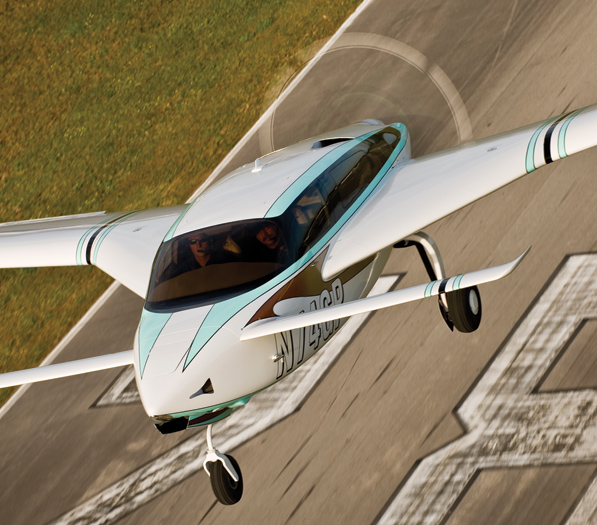

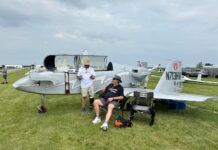
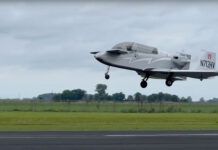
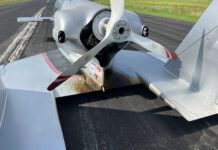
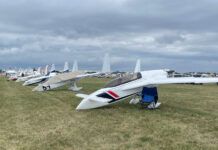
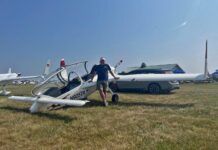
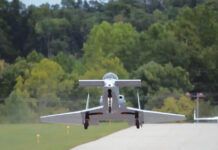
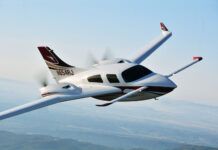
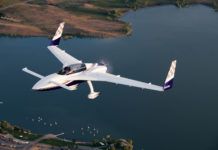
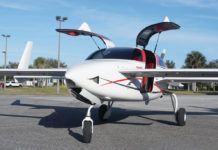
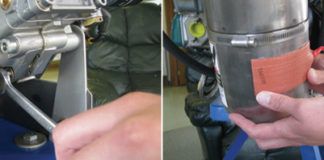
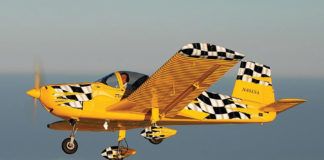
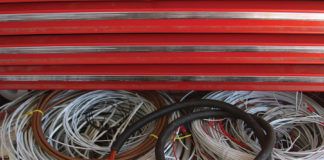
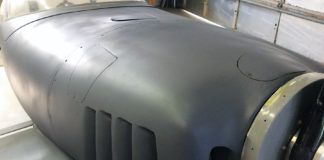
CIrrus SR22T has a Continental TSIO 550-K engine. These engines should never need to run into the 400f plus CHT range. You can use TIT temps to configure for best LOP by setting it to 1600f and a little below.
Agree with the previous comment. 420F degrees yellow line for a continental? Good luck with that. 380 is my yellow line and 400 redline. For a Lycoming I will go 400/420, but not a Continental unless you enjoy top overhauls every 700 hours. And 26 GPH is way too rich as well. LOP this plane would be maybe 17-18 GPH at high power settings. If it won’t fly LOP it is not a viable x-country machine in today’s world. Having owner a Velocity 25 years ago I will say they fly and handle nicely, but use a lot of runway. The XLT makes sense for X-country and the V-twin is nice for the two-engine safety, but is slower than a NA Velocity XL, so hard to justify. Unlike a Baron that has (2) 300 HP engines vs a Bonanza with single 300HP engines, the v-twin has only 20 to 100 more HP than the standard XL. Most twin planes have 2x the HP. I’m curious to know if proper cooling can be established to keep them temps below 380.